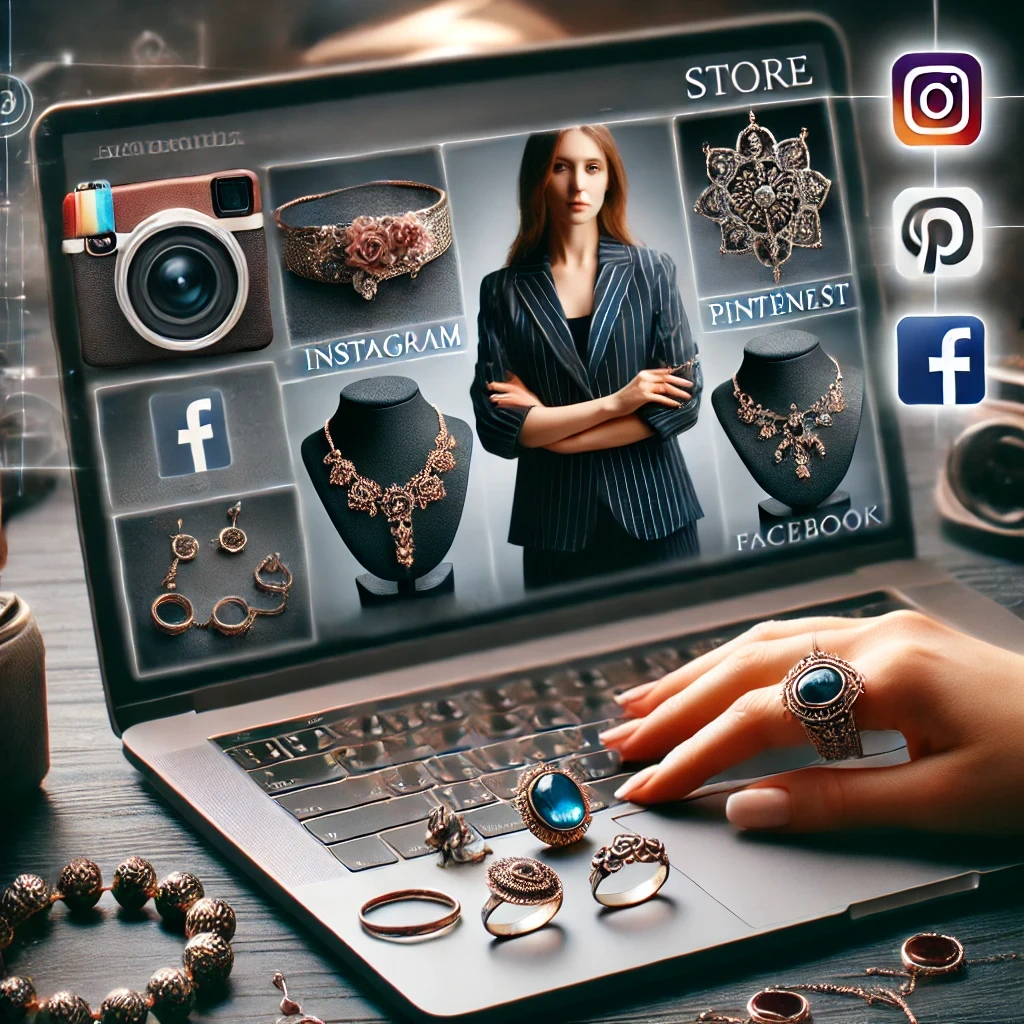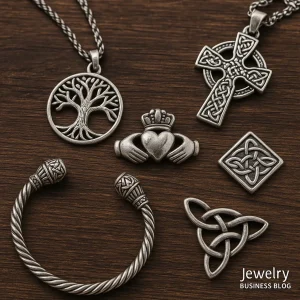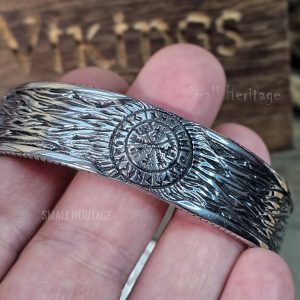In today’s digital landscape, social media plays a crucial role in shaping the success of businesses across industries, and the jewelry sector is no exception. Social platforms, such as Instagram, Pinterest, Facebook, and even TikTok, have become vital tools for jewelry brands and independent sellers to connect with customers, showcase their products, and drive sales. This trend is especially noticeable on platforms like Etsy, where social media promotion is actively encouraged to boost visibility and generate traffic to stores.
The Impact of Social Media on Jewelry Sales
According to recent reports, social media marketing accounts for a significant portion of jewelry sales, with platforms like Instagram and Pinterest driving up to 30% of total online jewelry purchases for some brands. For Etsy sellers, social media engagement is integral, and Etsy’s Share & Save program actively incentivizes sellers to share their products on social platforms, rewarding them for any sales generated through these shared links. This approach underscores the importance of social media in converting followers into paying customers.
Key Social Media Platforms for Jewelry Businesses
- Instagram: Instagram is one of the top platforms for jewelry sales, thanks to its visual-centric format. High-quality images and videos showcasing jewelry collections, customer reviews, and behind-the-scenes content help build brand awareness and trust. Instagram’s Shop feature allows users to purchase directly through the platform, creating a seamless shopping experience.
- Pinterest: Pinterest remains a powerhouse for driving organic traffic to jewelry websites. With users frequently searching for gift ideas, wedding accessories, and fashion inspiration, Pinterest serves as a major discovery platform for jewelry buyers. Jewelry businesses can benefit from pinnable content by posting attractive, shareable images and linking them back to their product pages.
- Facebook: Facebook’s wide reach makes it ideal for both paid and organic campaigns. With tools like Facebook Shops, businesses can set up storefronts directly on the platform, making it easy for users to browse and purchase items without leaving the app.
- TikTok: TikTok’s growing influence on e-commerce cannot be underestimated. Jewelry businesses are using this platform to create viral content, leveraging popular trends and challenges to reach a younger, trend-savvy audience. Short, engaging videos showcasing how jewelry pieces are made or styled have gained traction on the app.
Social Media Stores: A New Frontier for Jewelry Brands
Social Media Stores allow users to browse collections and make purchases without needing to visit external websites. This approach not only simplifies the customer journey but also improves conversion rates. Jewelry brands are increasingly adopting social media stores to tap into the convenience and wide reach these platforms offer.
Internal Link Placement: “If you’re looking to set up your own jewelry business and leverage social media for sales, check out our guide on Starting a Jewelry Business to learn essential tips for creating a strong digital presence.
The Benefits of Social Media for Jewelry Businesses
- Increased Reach and Engagement: Social media helps jewelry brands reach a global audience, allowing them to engage with potential customers through likes, shares, comments, and direct messages. This two-way interaction builds stronger relationships and fosters brand loyalty.
- Visual Appeal: Jewelry is inherently visual, and platforms like Instagram and Pinterest enable brands to leverage high-quality images and videos to captivate their audience. Creative visuals combined with strong storytelling can significantly increase product visibility.
- Targeted Advertising: Platforms like Facebook and Instagram offer advanced targeting options that allow jewelry businesses to reach specific demographics based on location, interests, and buying behaviors. This ensures that brands can direct their efforts toward users who are more likely to convert.
- Influencer Marketing: Collaborating with influencers is another way to amplify a jewelry brand’s social media presence. Influencers with loyal followings can introduce jewelry products to new audiences, boosting credibility and driving sales.
Challenges in Social Media for Jewelry Brands
While social media presents tremendous opportunities, it’s not without challenges. Constant content creation is necessary to maintain engagement, and platforms are becoming increasingly competitive. Algorithms favor brands that post regularly and interact with followers, which means jewelry businesses must invest time and resources into managing their social profiles effectively.
Is Social Media Driving the Future of Jewelry Sales?
The statistics make it clear: social media is not just a promotional tool for jewelry businesses, but a revenue driver. As more platforms integrate shopping features, we can expect the percentage of jewelry sales originating from social media to continue growing. For Etsy sellers, 60% of customers are returning shoppers, indicating that social media can also build long-term customer relationships.
If you’re interested in leveraging social media to promote and sell jewelry, platforms like Instagram, Pinterest, and Facebook should be central to your strategy. With the right approach, social media can help boost visibility, engagement, and sales for your jewelry business.
By integrating social media stores, targeted advertising, and influencer partnerships, jewelry businesses can tap into the significant sales potential of these platforms and drive growth in 2024 and beyond.





